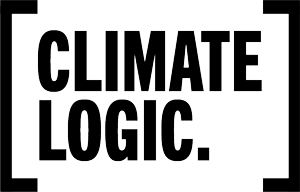Following on from our RFI cheat sheet article, understanding the full extent of your company’s carbon footprint is crucial for effective climate action. A significant portion of this footprint comes from scope 3 emissions, which encompass both upstream and downstream activities.
Scope 3 Emissions: An Overview
Scope 3 emissions are indirect emissions that occur throughout your value chain, resulting from activities not owned or directly controlled by your company. These can be broadly categorized into:
- Upstream Emissions: Emissions generated during the production and transportation of goods and services that your business purchases or uses.
- Downstream Emissions: Emissions that occur from the use and disposal of your products or services after they have been sold.
Upstream Emissions: Key Categories
Upstream emissions arise from various activities, including:
- Purchased Goods and Services: Extraction, production, and transportation of goods and services acquired by your company.
- Capital Goods: Emissions from the production and delivery of long-term assets like machinery and buildings.
- Fuel and Energy : Emissions from the extraction, production, and transportation of fuels and energy purchased by your company, not already accounted for in scope 1 or scope 2.
- Upstream Transportation and Distribution: Emissions from transporting and distributing products purchased by your company, including inbound logistics and transportation between facilities.
- Waste Generated in Operations: Emissions from the disposal and treatment of waste produced during your company’s operations, managed by third parties.
- Business Travel: Emissions from employee travel for business purposes in vehicles not owned or operated by your company.
- Employee Commuting: Emissions from employees traveling between their homes and workplaces in vehicles not owned or operated by your company.
- Upstream Leased Assets: Emissions from operating assets leased by your company that are not included in scope 1 and scope 2.
Downstream Emissions: Key Categories
Downstream emissions are associated with the post-sale phase of your products or services and include:
- Downstream Transportation and Distribution: Emissions from transporting and distributing your sold products between your operations and the end consumer.
- Processing of Sold Products: Emissions from downstream companies processing intermediate products sold by your company.
- Use of Sold Products: Emissions resulting from the end use of goods and services sold by your company.
- End-of-Life Treatment of Sold Products: Emissions from the disposal and treatment of products sold by your company at the end of their life cycle.
- Downstream Leased Assets: Emissions from operating assets owned by your company and leased to other entities.
- Franchises: Emissions from the operation of franchises not included in scope 1 and scope 2.
- Investments: Emissions from the operation of investments, including equity and debt investments and project finance.
Why This Classification Matters
By categorizing scope 3 emissions into upstream and downstream sources, your company can more effectively identify and address emission hotspots within your value chain. This understanding enables targeted strategies for emission reduction, aligning with global sustainability goals.
Managing Upstream and Downstream Emissions
To effectively manage these emissions, it’s essential first to measure them comprehensively. Given the complexity and potential for human error in manual calculations, leveraging automated, science-based carbon accounting solutions can enhance accuracy and efficiency. Such tools can help your company calculate, report, and reduce its full carbon footprint, facilitating the identification of emission hotspots and the implementation of effective reduction measures.
By taking these steps, your company can contribute meaningfully to global efforts to mitigate climate change, demonstrating a commitment to sustainability that resonates with stakeholders and supports long-term success.

![[Climate Logic]](https://climatelogic.com.au/wp-content/uploads/2023/07/climate-logic_logo_reverse.png)

